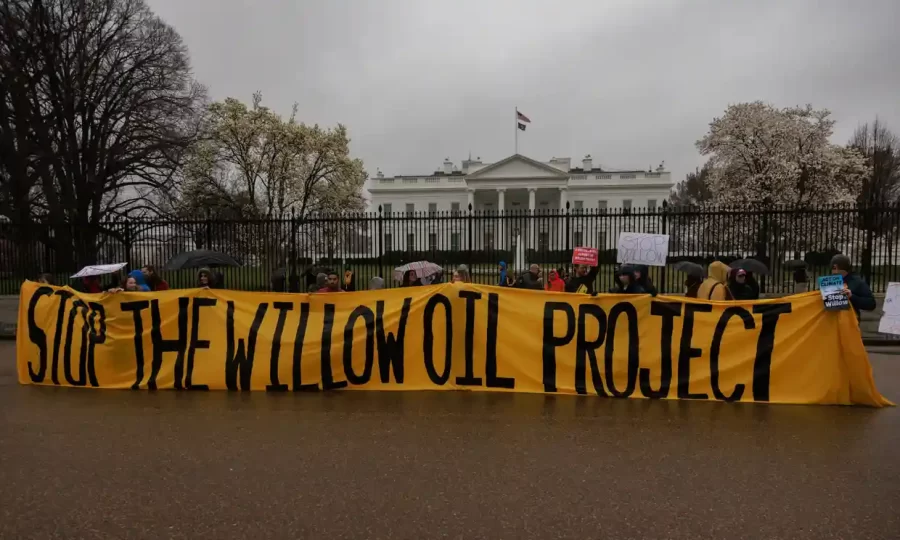Willow Project Impacts Future Generations
Photo provided by Bryan Olin Dozier
Protests in Washington D.C. advocate against the approval of the Willow Project. Photo provided by Bryan Olin Dozier
March 24, 2023
On March 13, 2023, the Biden administration approved the Willow Project, an oil drilling project on the plain of the North Slope of Alaska located on a Petroleum reserve. The motive of this project was to construct drilling pads around the oil reserve for the extraction of oil from a total of 250 wells.
Due to this project, many protests have arose and environmental activists such as those in Freedom High School continue to advocate against the continuation of this project.
“The amount of emissions and pollutants that this project will put out into the environment is way out of the bounds of creating a ‘carbon-pollution free power sector by 2035,’ which is Biden’s climate goal,” said sophomore Pragna Nidumolu, an environmental activist.
The everlasting effects of the Willow Project have been proven to bring out many harmful pollutants to the environment, hurting not only the atmosphere, but also Alaskan wildlife and humans.
According to the Natural Resource Defense Council, “the Willow Project would generate 277 million metric tons of climate-busting carbon pollution.”
The repercussions that the Willow Project has on the world sparked over 100 protestors to protest at the White House in response to the approval of this project. More youth have been contacting their senators and representatives of their state to stop this project in Congress. There have also been two additional lawsuits challenging the project after approval was public.
In years to come, scientists will observe the Willow Project and its effects as the drilling continues, researching whether it would harm more future generations of wildlife, humans and the environment.






























